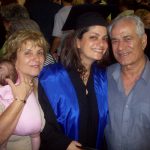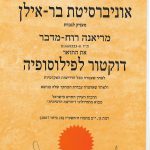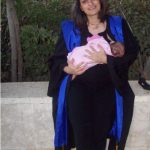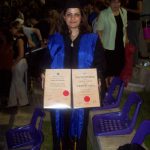The doctoral dissertation was written in the Program of Interdisciplinary Studies of Hermeneutics and Culture at Bar-Ilan University, with the supervision of Prof. Moshe Idel (Hebrew University, Jerusalem) and Prof. Adiel Schremer (Bar Ilan University). The work is written in Hebrew, but entails a long abstract and detailed contents in English. It holds over 450 pages, in two volumes, and was approved in 2006.
It was a pioneer big work in the area of the Alternative Spirituality in Israel, and served many dozens of researches that followed.
The work surveys the phenomena and trends of New Age culture in Israel, and deals with an array of methodological issues concerning the New Age studies. It offers a model of cultural interpratation – “the ideational/conceptual network”.
This work was carried out under the supervision of Prof. Moshe Idel (Department of Jewish Tought), Hebrew University, and the supervision of Prof. Adiel Schremer, (Department of Jewish History), Bar-Ilan University.
The English abstract and contents, as well as the same Hebrew parts and introduction can be freely downloaded. Downloading the work itseld (the two volumes) requires a password.
Abstract
Recently, the New Age [=NA] Movement has undergone a metamorphosis from a small marginal movement into a main and major phenomenon. I along with other scholars and observers see the NA as a concentrated, intensive and arrant manifestation of the general tendencies of Israeli and western society. Thus, the NA serves as a speculum to observe wider cultural processes.
But what is the NA culture and what is it comprised of? Past attempts to organize the field have failed, and attempts to classify phenomena as related or non-related to it haven’t succeeded; the proposed formal definitions are loaded with many hermeneutic problems. Thus, the main question in this research is, how should the NA culture (in Israel) be defined? The answer is given in two parts: The first one (the first and second chapters) provides a discussion of the methodological and theoretical aspects of defining the NA, a survey of definition approaches and their problems existing in the research, and a review of the phenomena in the field; The second one (the third chapter) suggests the conceptual network model as a definition of the NA culture in terms of its prevalent contents, ideas, values and narratives.
The first chapter focuses upon the problematic character of the wide diversity of different referents of the label, “New Age,” in the research. Some scholars suggest the label should be replaced – in order to accurately analyze the observant phenomenon, or in order to widen the angle, or in order to avoid essentialism; still the problem remains. Another issue is related to whether the NA is a religion, a state of mind, a social movement or a lifestyle. In order to refer to the different aspects of the phenomenon, I propose it be referred to as a culture. Scholars who have attempted to present the main ideas of NA have provided different lists, only partially compatible with each other; Some have tried to establish the NA based on one idea, but couldn’t agree as to what it should be.
NA description in various studies may teach us about the researchers and their attitude toward the research object. The relatively young field of NA research is loaded with polemics among experts and laymen. The chapter also classifies the hermeneutical difficulties of the field into five challenges: The first is the lack of organization of the phenomenon, its fuzziness and the scholarly gaze that orders it. The second – the labeling problem, related to the denial of the research objects perceived as “New-Agey.” The third – the problematic character derived from a too narrow or too wide prism. The fourth – problems of definitions that rely on historical narratives. The fifth – the tension between emic and etic discourse and between critical and empathic research. It should be pointed out that the NA might be seen as a counter-culture or critical-culture; this explains the strong emotions it arouses in the research, and requires reflectivity and caution.
In the face of the variety of challenges and problems undermining definitions, I suggest to change the sharp Boolean decision of phenomena being related to NA with a contingent (of many different considerations), accumulative (“arrantly related”, “scantly related” etc.), and contextual (“not related in the sense that…”) decision. Also, I suggest the definition be multidisciplinary and leave room for the theological and philosophical aspect.
The second chapter surveys several ways of dividing the field, and focusing on Israeli examples, reveals various NA phenomena. The survey shows the difficulty in delineating a sharp division between different streams, and the vagueness regarding including or excluding phenomena in/of the “NA” label. One of the examples dealt with at some length is the NA (semi-) academia. The chapter deals with the “self consciousness” of the phenomena of the interconnectedness that creates sociological and conceptual coherence, and an appearance of a network. Ten examples are given in order to demonstrate the problematic of relating phenomena to the NA. The chapter also summarizes statistical data regarding the volume and distribution of the phenomenon (beliefs, products and the like), and presents some evidence for the shift in the NA culture status from the margins of society to its mainstream and institutions. The chapter closes with pointing out the field which served for my research.
The third chapter describes the model offered as a means of defining and analyzing the NA: the conceptual network. The network characters are reviewed, as studied in the recently emerging network science, and are applied an analysis of the NA culture. I maintain that the NA conceptual network should be considered as “scale-free” (high interconnectivity, unequal distribution of links, salient hubs, constant growth etc.). The relations between the NA and other networks and their percolation are also discussed. The network model provides a solution to the various difficulties mentioned in the research – It proves the conceptual depth of NA, that is expressed in a repetition of associational patterns on the one hand, and in a rejection of ideas on the other hand, implying that not every idea is accepted. Likewise, Consistent correspondences between thought (values, images), speech (manners of expression), and deeds (behavioral practices) are revealed. The network also reflects the cultural complexity, and supplies the required vagueness in classifying and relating phenomena.
A case study – NA perceptions of the past – is analyzed in the third chapter. There appears to be a repetition of a pattern of narratives, values and links, that is epitomized by: an ideal pre-history, a negative history appearing following a crisis, and a latent continuity or spiritual evolution preserved from the beginning to the present. Despite the contradictions and differences among the NA teachings, it is made clear that several patterns are maintained. They appear, for example, in myths of humankind, private biographies, theoretical rationales of treatment methods and graphics. The chapter ends by presenting several cultural analyses of NA, with their “ideological cargo.” The contrasting directions of interpretation demonstrate the necessity for reliance on a solid and accepted foundation and for proposing a range of angles. A rigorous preliminary analysis of the conceptual network may serve as such a platform, enabling diverse future research directions.
Finally, the research points to two tendencies in the formation of NA Jewish-Israeli identities.
Author
Marianna Ruah-Midbar
Date
Jun 28th, 2005
Language
English
Academic/Non-Academic
Academic
Publisher/Source
Bar Ilan University
Bibliographical citation
Ruah-Midbar, Marianna. The New Age Culture in Israel (A Methodological Introduction and the ‘Conceptual Network’) – Doctoral Dissertation. Bar Ilan University: Ramat Gan. 2006. [Hebrew]






